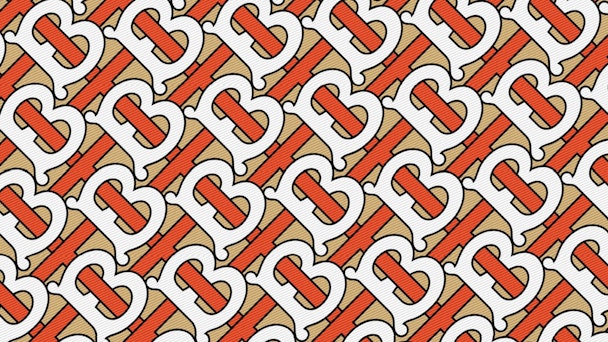‘Winning the millennial playbook’: Burberry – what’s gone right?
Burberry surprised City analysts this week when it posted a 4% increase in sales, leading to a 14% surge in shares (its best performance in a decade) and upping its stock market value by more than £1bn. It’s an impressive turnaround from a brand that's been on a mission to overhaul for the past year.

Burberry
The long-awaited positive outlook from the luxury British retailer came on the back of a year of change following the exit of long term chief exec and creative lead Christopher Bailey as well as chief marketing officer Sarah Manley.
It swiftly welcomed a new chief in Marco Gobbetti, brought in former Calvin Klein marketer Rod Manley and found a new chief creative officer in Riccardo Tisci. In the face of struggling sales, it set about on a £100m cost savings plan and announced the closure up 10% of its global stores.
But, on a call with analysts yesterday (16 July), the company talked up how it had “built brand heat” through its redesigned logo and Tisci’s first monogram capsule collections.
“This was the first quarter where the proportion of new product in our stores was meaningful and the response from consumers was very promising,” said Gobbetti.
“New collections delivered strong double-digit percentage growth, with all regions ahead of prior year equivalent collections.”
Instead of putting products in-store or online first, the company has instead turned to Instagram as well as China’s WeChat, Korea’s Kakao and Japan’s Lin services to launch selected "exclusive" products from Tisci’s collection.
“Our traction across Instagram and WeChat continue to progress positively,” said chief financial officer Julie Brown. “We saw growth in the number of followers and double-digit gains in engagement rate per post compared to the previous quarter. And we continue to innovate on new platforms like TikTok and Doujin in China.”
A “monogram challenge” it ran on Doujin – a UGC video platform – delivered one billion views, it said. Meanwhile, the B Series products sell out within hours, driven by particular interest from Chinese consumers. A pair of black leather gloves sold out within 20 minutes on WeChat, for example.
“Burberry is doing a lot right, right now—winning with the millennial playbook clearly in hand: clarifying their luxury positioning with more focused distribution. Driving awareness and recognition with the social-worthy Thomas Burberry monogram. Instigating newness with the B series monthly drops. Streamlining customer experience with the launch of Instagram and WeChat shopping features. Turning competition into collaboration with their Vivienne Westwood limited edition release,” said Sara Vanore Rewkiewicz, director of youth oracles at ODD London, an agency specialising in the fashion sector.
“What will be interesting is to see how they take these efforts to the next level to not just be ready for right now, but truly fit for the future. Peak Youth and Peak Consumerism is upon us. The real test of Burberry's transformation programme will be can it meet the scale and pace of change that Gen Z demands, and will demand even more of, from brands—as we can eagerly expect nothing less from our loudest voices of progress. A luxury leader like Burberry with innovation core to its heritage is ideally placed to be a halo for the new world order. We'll soon see if it'll seize this opportunity.”
But efforts to rebuild the brand haven't been without challenges, namely when the fashion house was outed in the national media for its controversial practice of incinerating unsold goods. It was found to have destroyed £28.6m worth of stock in 2017, including clothes, accessories and perfume, in order to protect the Burberry image.
Gobbetti quickly vowed that it would become "socially and environmentally responsible" in a bid to stem the damage.
Rueben Turner, creative partner at The Good Agency, said at the time that it was reputational disaster for the company. However, with Brown taking time on the analysts call to stress its discounting strategy and plans to better manage product flow, he said the brand has manage to navigate the PR disaster with little long-term damage.
“Burberry’s recovery shows that brands who make the right decisions on sustainability can recover from PR disasters. Burberry committed to change, and that’s going to be important for young, affluent, climate-conscious consumers who are rejecting fast fashion in favour of buying fewer, better items," said Turner. "Burberry making less, more carefully, chimes with their values and that has to be a win-win.”
Though new chief marketing officer Manley has yet to make his mark, having only joined in recent months, one area of focus will likely be infleuncer marketing. Brown claimed that key social media influencers are increasingly endorsing Burberry products "organically" and that's helping to "improve editorial ROI".
"The use of social media, the use of influencers, the collections of B Series, the Monogram collection recently are all designed to reignite heat around the Burberry brands and that has been successful," she said . "We’ve seen double digit increase in the levels of engagement around this, and Europe is very much part of the activation campaign."
Despite this, research from data released by SocialBakers suggests Burberry has some work to do to maintain the momentum it saw between September 2018 and January 2019 with the number of Instagram posts still on the wane.


